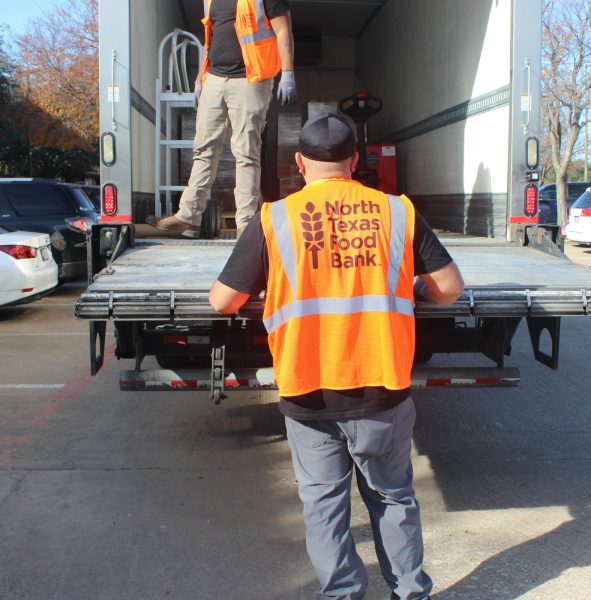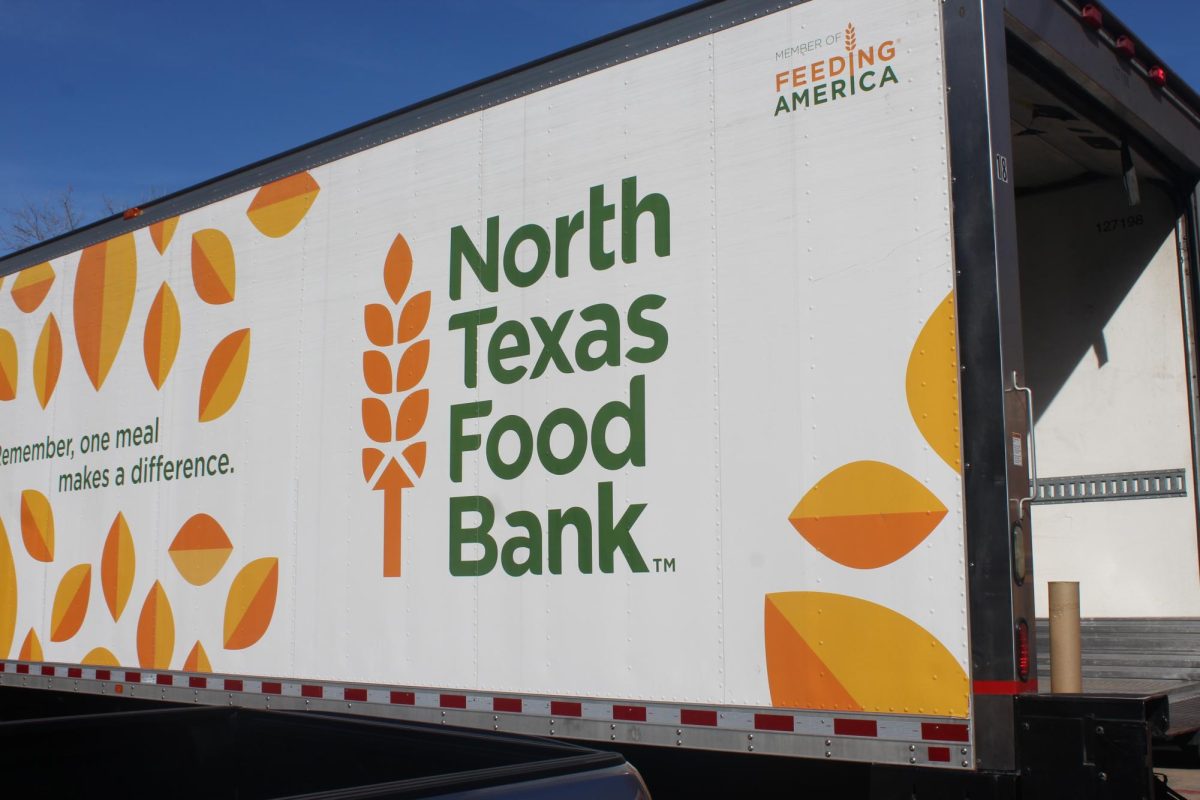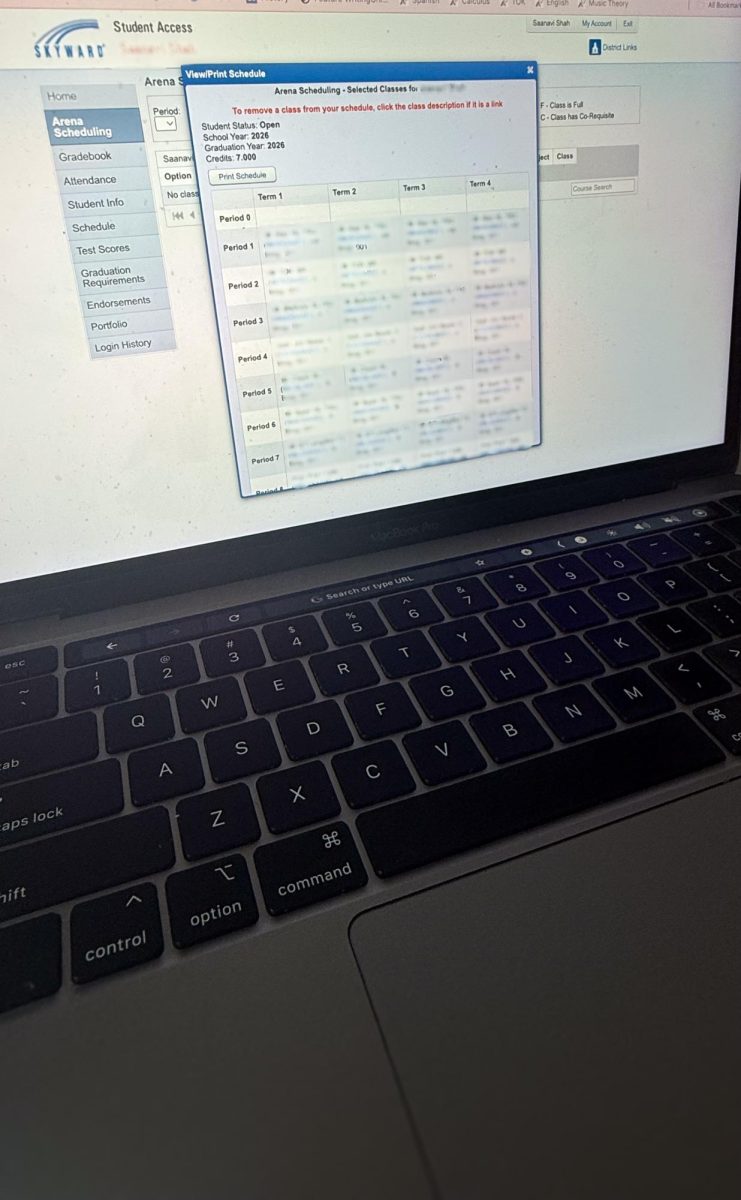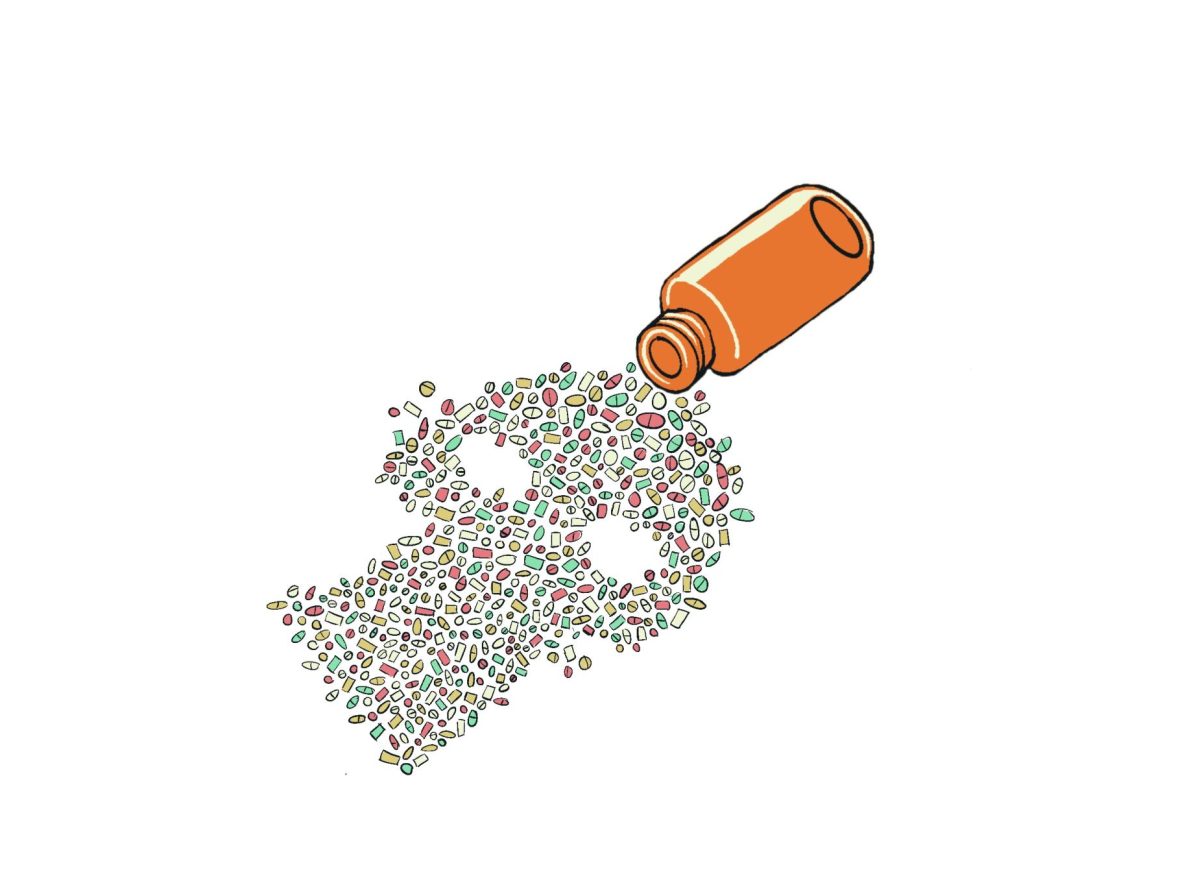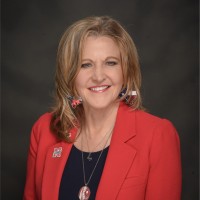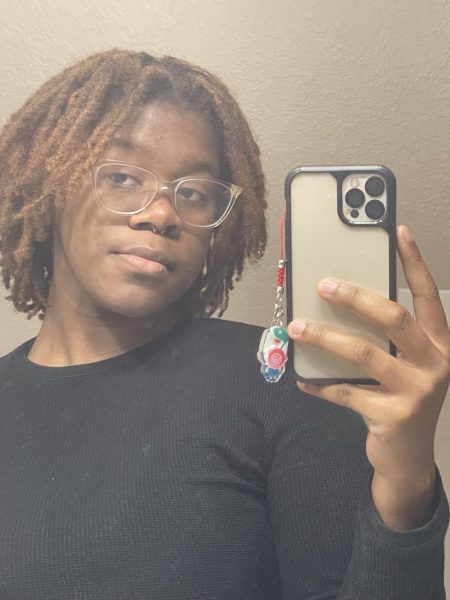As of November 2023, Texas is only second to Arkansas in states with the most food insecurity, according to North Texas Food Bank.
From 2020-22, Texas had an average of 15.5% of households that report having inconsistent access to affordable and healthy food, according to North Texas Food Bank.
“When someone is food insecure, it means that they don’t necessarily have regular access to food,” Jeff Smith, senior manager of communications of North Texas Food Bank said. “It doesn’t mean that they don’t have access to food at all, but just depending on their life circumstances it means that they don’t have regular access to nutritious food.”
The definition of food insecurity comes from the U.S. Department of Agriculture however this definition does not include people who temporarily or infrequently lack access to food.
“There’s over 44 million people [in the US] that are food insecure and that includes 13 million children that are experiencing food insecurity every year,” Geoben Johnson, food operations manager of All Community Outreach said. “However there’s many more people, including millions who don’t even meet the definition of food insecure. They turn to people like [ACO] or any charitable food sector for support. There’s more than 800 million people who live every day with hunger or food insecurity as their constant companion.”
Food insecurity can affect everyone but some groups experience food insecurity at a higher rate than others.
“In the 13 counties we serve, one in eight people overall face food insecurity,” Smith said. “But when you look at the various breakdowns, one in five Black persons face food insecurity so it’s a 22% food insecurity rate. One in seven Hispanic people face food insecurity so it’s a 14% rate of food insecurity, and then one in 14 white, non-Hispanic persons face food insecurity so that’s a 7% [rate.]”
This higher risk may come from discrimination, poverty or other similar factors, according to Johnson.
“Even people with a steady income and affordable housing can experience a temporary setback that leads to food insecurity, including job loss, natural disasters or a family crisis,” Feeding America said.
The effects of food insecurity can harm both physical and mental health.
“People who experience food insecurity are more likely to experience malnutrition and chronic conditions like heart disease and diabetes,” Johnson said. “It can also hurt people’s mental health and result in depression, anxiety and of course stress. Not meeting basic needs like food and shelter can lead to social isolation, stigma and doubt and also shame because you’re having to swallow a lot of pride if you have to come get food or help and that kind of thing.”
It also can impair the ability to complete tasks that are frequently expected in institutions like during school.
“Without enough food people who experience food insecurity may have difficulty concentrating,” Johnson said. “If you can’t eat it’s kinda hard to focus on other things, they may have low energy because they don’t have any fuel in that body of theirs to give them energy. Because of that they may wind up missing school or work due to illnesses and things that come along with not having enough food to keep you in good health.”
Food deserts are typically in rural areas where there are not many food pantries or organizations local enough to offer assistance or where large grocery store brands have not built upon yet, according to Smith.
“[Food insecurity can] look like your next-door neighbor,” Johnson said. “The woman who just experienced a divorce, the person who just lost their job, the family that just found out they have a serious medical condition that can affect what they can or cannot do.”
Food banks, food shelters and other charitable food sectors may sound similar but have important differences.
“Food bank is a non-profit that safely stores millions [of] pounds of food to be delivered to local food programs like a food pantry,” Johnson said. “Food banks come in all different sizes. Some are very large, more than 25 of the Feeding America food banks double the size of the average wholesale club like a Costco or Sam’s Club. Regardless of size, the food that they store is donated from local neighbors, retail stores, grocery stores and restaurants.”
The Feeding America network consists of over 200 food banks and 60 thousand food pantries and meal programs that provide food in nearly every community in all 50 states, Washington D.C. and Puerto Rico, according to Feeding America.
“A food pantry is a distribution center where hungry families can receive food,” Johnson said. “The food bank provides food to the food pantries and now we at the food pantry provide it to the customer out there, to the client, to the person who’s hungry.”
Misconceptions about food insecurity can increase the stigma around it and to a greater extent, make it harder for people to ask for help.
“People think that because the person is in need that they don’t want to work or that they didn’t get a good education or it’s their fault because of the situation they’re in,” Johnson said. “My experience is that I know that that’s not the case, it can happen to anyone at any time due to events that may wreak financial havoc on their lives.”
Texas overall is ranked the second highest state with food insecurity, but the Dallas area in particular is ranked high as well.
“Most people are surprised to learn that the 13 counties that the food bank serves have the fourth highest amount of food insecurity in the nation,” Smith said.
This is behind Los Angeles County, New York City and the city of Houston, according to Smith.
The government provides certain assistance to those who are registered for benefits. Programs like the Supplemental Nutrition Assistance Program provide monthly funds on a card similar to a debit card for those registered to buy food.
“[SNAP] helped over 40 million people put food on the table,” Johnson said. “It’s one of the most effective methods to end hunger but over seven million people don’t realize they qualify for SNAP. We have counselors here that help people understand about SNAP and apply for and access those benefits.”
The goal of the Feeding America program and branches of its network is to help people get the food and resources they need to thrive, according to Feeding America.
“Many many people in every zip code we serve are having to make some tough choices right now about whether they’re purchasing food or paying their living expenses and we don’t believe food should ever have to be a choice people are having to make when they’re juggling their bills,” Smith said. “Because of that and the 500 feeding partners that we work with we’re trying to make sure that no one has to make that choice. Last year we provided 444 million meals to people, which is a record number of meals.”
There are four major ways people can help fight hunger, according to Smith. Donating food, funding a food bank, volunteering and speaking up.
“A lot of people just don’t understand or don’t realize the magnitude of food insecurity, so using your voice to help people understand there is an issue here and there are things that can be done,” Smith said. “Specifically using your voice with our local officials, a lot of our programs are run by the government that help people that are in need.”
Students who are experiencing hunger or food insecurity during the school day can visit their house office during their lunch, privilege period or passing periods. Snack resources are available as a part of the Caring Closet program on campus.
